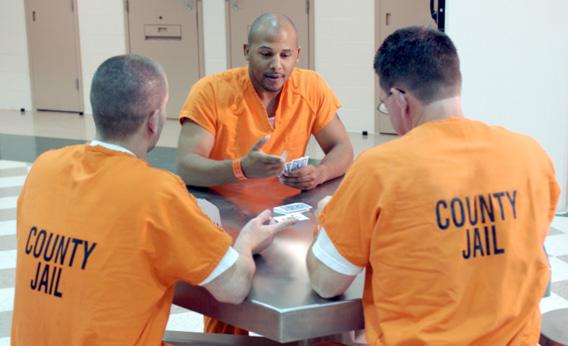A Pennsylvania judge released accused child molester Jerry Sandusky on $100,000 bail on Monday. The decision keeps Sandusky out of the reach of prison inmates, who have a reputation for attacking child molesters. Are molesters really the most reviled people in prison?
Yes. In the social hierarchy of prison inmates, mob kingpins, accomplished bank robbers, and cop killers tend to get the most respect. Convicts who have committed crimes against children, especially sexual abuse, are hated, harassed, and abused. Many inmates refer to molesters as “dirty” prisoners, and some insist that assaulting or killing them represents a service to society. But a convict’s crime plays only a small role in his social status and safety. Most jailhouse assaults happen because the victim violated prison norms, not because of the crime he committed on the outside. Those who steal tobacco, disrespect the members of an opposing gang, or snitch are in for a much rougher ride than the average molester.
Prisoners use a couple of tricks to identify dirty inmates. They may ask new arrivals for their “jacket,” which refers to the paperwork—including information on laws violated—that some states issue to each prisoner. In the absence of such documentation, the inmates rely on rumors or the occasional clue. Transfers from other prisons who arrive with signs of physical trauma, for example, are frequently suspected of being dirty. According to inmate accounts, correctional officers sometimes mention that the transfer was “marked” at his old facility, meaning there was a hit put on him.
Accounts of what happens next are part fact and part mythology. Without a doubt, many prisoners bully and threaten molesters from the moment they arrive. The child abuser often becomes so fearful that he asks to be moved into the protective custody unit, along with the snitches and people who are trying to get out of a prison gang. In protective custody, the molester has limited contact with others. He eats, showers, and uses the yard at off-hours, so he won’t encounter his tormenters.
The mistreatment of molesters in prison, however, is often exaggerated. Despite a handful of high-profile murders, like those of Jeffrey Dahmer and Father John Geoghan, relatively few child molesters are killed. California sends about 1,300 people to jail every year for sexual abuse of a minor. Only 11 people die annually from assaults in California prisons, and few of them are convicted molesters. Criminologists say that many child molesters assimilate into prison society perfectly well, even if their fellow inmates know what they did. It’s often a question of making friends in the right gang—usually based on your race or which county you’re from—and relying on their protection.
Criminals offer a couple of justifications for committing violence against imprisoned molesters. First and foremost, they feel that prison isn’t an adequate punishment for the crime, and killing the molester is a service to his victims. In an interview for her study “ ‘We have to take these guys out’: Motivations for Assaulting Incarcerated Child Molesters,” criminologist Rebecca Trammell had the following exchange with a former inmate:
Jimmy: If someone raped your kid, you’d want me to kill him right?
Interviewer: I don’t know if I’d want them killed.
Jimmy: Don’t pull that PC shit with me, you’d want him dead. We all would. We are doing a favor to the family.
Secondly, the prisoners don’t want to live with molesters, and they know that one who suffers intense harassment may be pulled out of the general population and into protective custody. One inmate told Trammell: “I’ve only had sex with adults that wanted to have sex with me. So I get to hang out in the yard in prison with all the freaks? What’s up with that? That’s not right.”
Got a question about today’s news? Ask the Explainer.
Explainer thanks Mark Fleisher of Case Western Reserve University, author of The Myth of Prison Rape: Sexual Culture in American Prisons, and Rebecca Trammell of the University of Nebraska-Omaha.
